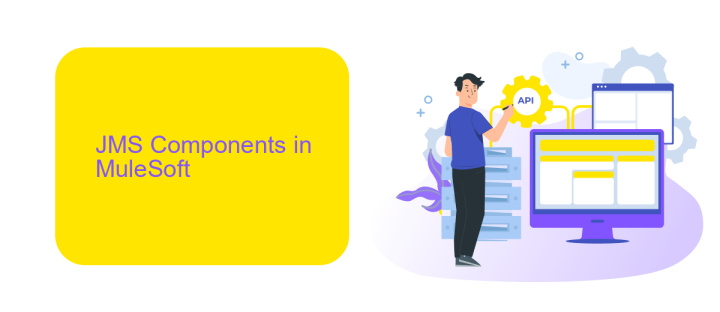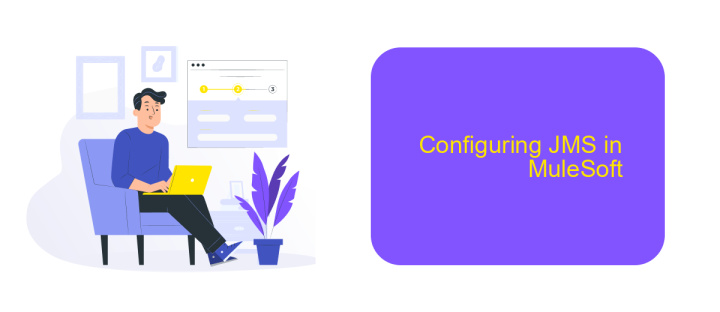What is JMS in MuleSoft
Java Message Service (JMS) in MuleSoft is a powerful messaging framework that allows applications to communicate asynchronously and reliably. By integrating JMS with MuleSoft, businesses can enhance their data exchange processes, ensuring seamless and efficient message delivery across different systems. This article explores the fundamentals of JMS, its implementation in MuleSoft, and the benefits it brings to enterprise integration solutions.
Introduction to JMS in MuleSoft
Java Message Service (JMS) is a messaging standard that allows application components to create, send, receive, and read messages. In MuleSoft, JMS provides a reliable and asynchronous way to integrate different systems and applications. This capability is essential for building robust and scalable integration solutions.
- Asynchronous Communication: JMS enables decoupled communication between systems, allowing them to function independently.
- Reliability: Ensures that messages are delivered even if the receiving application is temporarily unavailable.
- Scalability: Facilitates the handling of high volumes of messages without performance degradation.
Integrating JMS in MuleSoft involves configuring endpoints and connectors to interact with JMS providers. Tools like ApiX-Drive can further simplify these integrations by offering pre-built connectors and automated workflows. This allows businesses to streamline their integration processes, reducing the time and effort required to set up and maintain JMS-based communication channels.
JMS Components in MuleSoft

In MuleSoft, JMS (Java Message Service) components are essential for enabling asynchronous communication between various applications. These components facilitate the sending and receiving of messages through JMS queues and topics, ensuring reliable and scalable message exchange. MuleSoft provides out-of-the-box connectors for popular JMS providers such as ActiveMQ, WebSphere MQ, and TIBCO EMS, allowing seamless integration with existing messaging systems. By leveraging these connectors, developers can easily configure and manage JMS endpoints, optimizing message flow and enhancing system performance.
For more advanced integration scenarios, services like ApiX-Drive can be utilized to simplify the configuration process. ApiX-Drive offers a user-friendly interface and a wide range of pre-built connectors, making it easier to set up and manage integrations without extensive coding. This service can be particularly beneficial for connecting MuleSoft applications with various third-party systems, ensuring smooth data exchange and reducing development time. By combining MuleSoft's robust JMS capabilities with the flexibility of ApiX-Drive, organizations can achieve efficient and reliable integration solutions.
JMS Patterns and Use Cases

JMS (Java Message Service) in MuleSoft offers various patterns and use cases to streamline messaging and integration processes. These patterns help in designing robust and scalable systems that can handle asynchronous communication effectively.
- Point-to-Point: This pattern involves direct communication between a single sender and a single receiver. It ensures that each message is delivered and processed only once.
- Publish/Subscribe: In this pattern, messages are broadcasted to multiple subscribers. It is ideal for scenarios where multiple systems need to receive the same information simultaneously.
- Request/Reply: This pattern allows for synchronous communication where the sender waits for a response from the receiver before proceeding. It is useful for real-time data processing and validation.
- Message Filtering: This pattern involves sending messages to specific receivers based on certain criteria. It ensures that only relevant messages are processed by each system.
Integrating JMS with MuleSoft can significantly enhance your system's efficiency. Tools like ApiX-Drive can further simplify the integration process by providing seamless connectivity and automation solutions, ensuring that your messaging infrastructure is both reliable and scalable.
Configuring JMS in MuleSoft

Configuring JMS in MuleSoft involves setting up the necessary components to enable seamless messaging between different systems. To begin, you need to have a JMS provider and ensure that it is correctly installed and configured. MuleSoft supports various JMS providers, including ActiveMQ, IBM MQ, and WebLogic.
Once your JMS provider is ready, the next step is to configure the JMS connector in MuleSoft. This involves specifying the connection details, such as the broker URL, username, and password. You also need to define the JMS queues or topics that will be used for sending and receiving messages.
- Install and configure your JMS provider (e.g., ActiveMQ, IBM MQ).
- Set up the JMS connector in MuleSoft with the appropriate connection details.
- Define the JMS queues or topics for message communication.
- Test the configuration to ensure proper message flow.
For enhanced integration capabilities, consider using ApiX-Drive, a service that simplifies the process of connecting various applications and automating data transfers. ApiX-Drive can help streamline your JMS configurations by providing a user-friendly interface and robust integration options.
Best Practices for JMS in MuleSoft
When implementing JMS in MuleSoft, it is crucial to ensure optimal configuration and performance. Start by defining clear and concise message structures to avoid unnecessary complexity. Utilize durable subscriptions for critical message delivery to guarantee that no messages are lost. Always configure appropriate acknowledgment modes to manage message processing effectively. Additionally, implement error handling and retry mechanisms to manage transient failures and ensure message delivery reliability.
For seamless integration, consider using services like ApiX-Drive, which can automate and streamline the setup process. ApiX-Drive offers pre-built connectors and integration templates that can significantly reduce development time and errors. Regularly monitor and fine-tune your JMS configurations to maintain performance and scalability. By following these best practices, you can ensure a robust and efficient JMS implementation in MuleSoft, providing reliable message delivery and processing across your enterprise applications.
FAQ
What is JMS in MuleSoft?
How does JMS work in MuleSoft?
What are the benefits of using JMS in MuleSoft?
How can I implement JMS in MuleSoft?
Can I integrate JMS with other automation and integration services in MuleSoft?
Time is the most valuable resource for business today. Almost half of it is wasted on routine tasks. Your employees are constantly forced to perform monotonous tasks that are difficult to classify as important and specialized. You can leave everything as it is by hiring additional employees, or you can automate most of the business processes using the ApiX-Drive online connector to get rid of unnecessary time and money expenses once and for all. The choice is yours!

